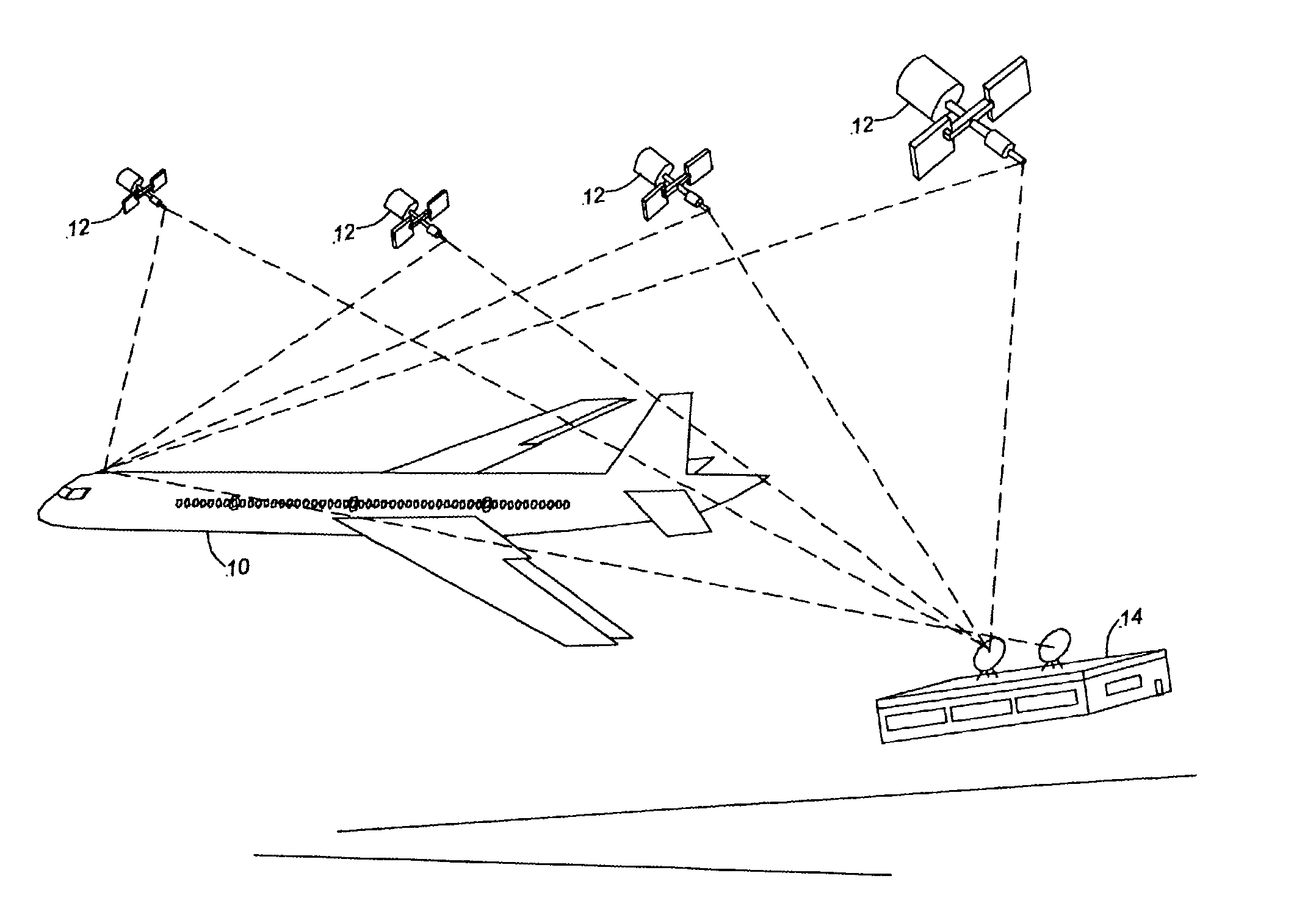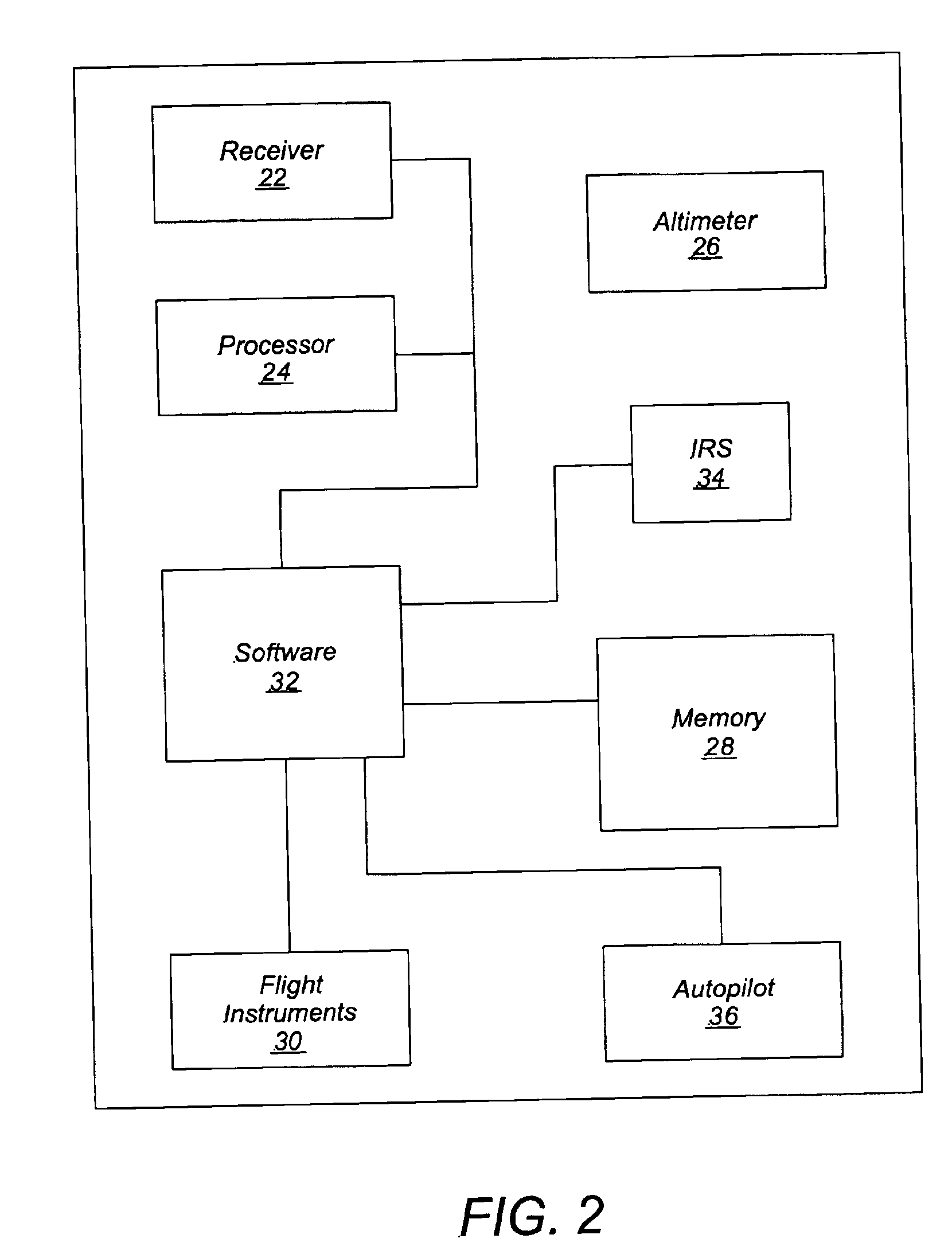Method of and system for deriving inertial-aided deviations for autoland systems during GPS signal interruptions
a technology of inertial aid and autoland system, which is applied in the direction of navigation instruments, using reradiation, instruments, etc., can solve the problems of ils signals being sensitive to local building construction, equipment is expensive, and only practical ils signals
- Summary
- Abstract
- Description
- Claims
- Application Information
AI Technical Summary
Benefits of technology
Problems solved by technology
Method used
Image
Examples
Embodiment Construction
s for an exemplary coordinate conversion process;
[0020]FIG. 6 is a diagram illustrating processing operations for exemplary calibration and coasting processes using a third-order filter in accordance with an exemplary embodiment; and
[0021]FIG. 7 is a diagram illustrating processing operations for exemplary calibration and coasting processes using a second-order filter in accordance with an exemplary embodiment.
DETAILED DESCRIPTION OF EXEMPLARY EMBODIMENTS
[0022]Referring to FIG. 1, an exemplary airplane precision approach guidance system including a Global Positioning System (GPS) Landing System (GLS) augmented with an Inertial Reference System (IRS) is provided in an aircraft 10. In the following description, for purposes of explanation, numerous specific details are set forth to provide a thorough understanding of exemplary embodiments of the invention. It will be evident, however, to one skilled in the art that the invention may be practiced without these specific details. In othe...
PUM
 Login to View More
Login to View More Abstract
Description
Claims
Application Information
 Login to View More
Login to View More - R&D
- Intellectual Property
- Life Sciences
- Materials
- Tech Scout
- Unparalleled Data Quality
- Higher Quality Content
- 60% Fewer Hallucinations
Browse by: Latest US Patents, China's latest patents, Technical Efficacy Thesaurus, Application Domain, Technology Topic, Popular Technical Reports.
© 2025 PatSnap. All rights reserved.Legal|Privacy policy|Modern Slavery Act Transparency Statement|Sitemap|About US| Contact US: help@patsnap.com



